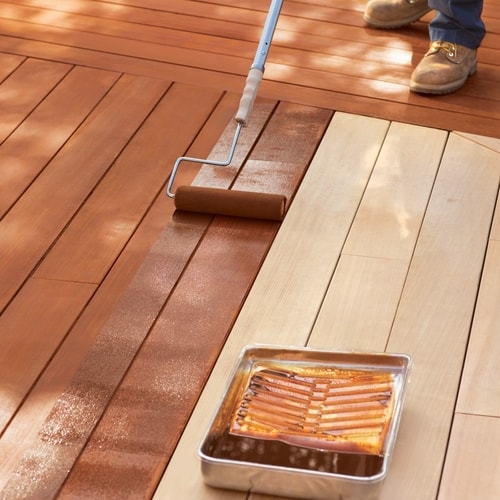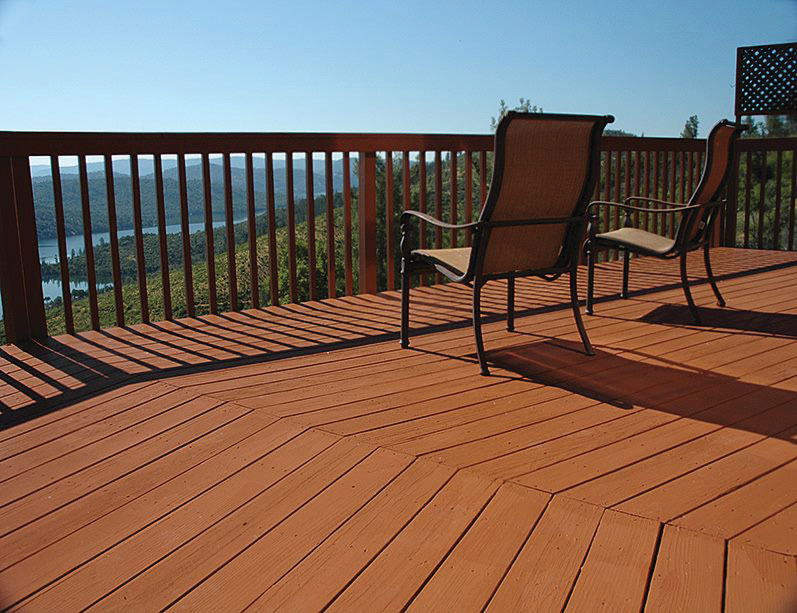Protect and Enhance: Revealing the Art of Fence Staining
Wiki Article
Selecting the Right Discoloration for Your Fencing: Tips and Considerations
When it comes to maintaining and improving the look of your fence, choosing the right discolor is crucial. With a large range of alternatives offered, it can be frustrating to figure out which discolor will certainly finest suit your demands. This guide will give you with factors to consider and ideas to assist you make an educated choice. We will certainly discover the various kinds of fence discolorations, variables to consider before selecting a discolor, tips for preparing your fence for discoloration, and the differences in between oil-based and water-based discolorations. In addition, we will look into choosing the best stain shade to enhance your fencing and enhance your outdoor room. By following these standards, you can guarantee that your fencing stays secured and visually pleasing for many years to find.Recognizing Various Sorts Of Fence Discolorations

On the other hand, water-based discolorations are made from acrylic or latex and use a more subtle shade to the wood. They develop a protective movie on the surface of the wood, avoiding moisture from seeping in and protecting versus UV damages. Water-based stains are less complicated to tidy up and have a quicker drying time contrasted to oil-based spots. They are additionally less most likely to split or discolor with time.
Picking in between oil-based and water-based stains depends on numerous factors, including personal preference, the desired appearance, and the level of upkeep called for. Oil-based spots are suggested for fence high-traffic areas or those frequently exposed to extreme weather. fence staining and sealing. Water-based spots, on the other hand, are a prominent choice for surround residential locations where appearance and convenience of usage are essential
Comprehending the distinctions between water-based and oil-based spots helps homeowners make an informed choice when selecting the appropriate discolor for their fence. Considering the details requirements of the fence, such as its area, direct exposure to sunlight, and wanted aesthetic, will certainly make sure that the selected tarnish supplies long-lasting defense and enhances the total charm of the fencing.
Elements to Take Into Consideration Before Picking a Discoloration

Various types of timber absorb discolorations in different ways, resulting in varying degrees of color intensity and sturdiness. Additionally, certain timbers might be much more vulnerable to issues like rot or insect invasion, which may impact the choice of discolor to protect and protect the fencing.
The climate and weather in your area should likewise be taken into consideration. If you stay in a location with extreme winters months or high humidity, you may need a stain that offers added protection against moisture and UV rays. Furthermore, if your fencing is revealed to route sunshine for lengthy periods, a discolor with UV inhibitors can help prevent fading and discoloration.
Finally, it is essential to consider your preferred visual. Different stains offer numerous shades and surfaces, permitting you to tailor the look of your fence (fence staining). Take into consideration the total style and layout of your property, as well as any kind of local policies or home owner organization standards that might dictate the appropriate stain shades
Tips for Readying Your Fence for Discoloration
To prepare your fencing for staining, beginning by thoroughly cleansing the surface using a light detergent and a stress washer or scrub brush. Cleansing the fence is an essential action as it eliminates dust, crud, and any kind of previous finishes that may disrupt the discoloration process. Begin by wetting the fencing with water and after that use a mild cleaning agent using a scrub brush or a pressure washing machine with a low-pressure setting. Rub the surface carefully, paying extra focus to areas with persistent stains or mold and mildew. Wash the fence completely with clean water to eliminate all traces of detergent.After cleansing, allow the fence to dry totally. fence staining. This action is essential as discoloring a damp or wet surface can cause inadequate attachment and an uneven finish. Depending upon the weather, it may take anywhere from a few hours to a few days for the fence to completely dry thoroughly. Make sure that the fencing is entirely dry prior to continuing with the staining procedure.
Before discoloration, check the fencing for any damages, such as loosened boards or nails. This product helps to open the wood pores, permitting the stain to pass through more successfully and evenly.

Comparing Water-Based and oil-based Spots
When picking a discolor for your fence, it is necessary to contrast the qualities and advantages of water-based and oil-based spots. Both kinds of spots have their own benefits and factors to consider, so it is essential to comprehend the distinctions in between them.Oil-based spots are understood for their durability and resistance to use and tear. Furthermore, oil-based spots have a tendency to last longer than water-based spots, making them a prominent choice for fencings.
On the other hand, water-based stains are other much more ecologically friendly and much easier to cleanse up. They have a reduced VOC (unstable organic compound) content, which means they release fewer hazardous fumes into the air. Water-based stains additionally completely dry much faster, permitting a quicker application and less downtime. Nonetheless, they might not supply the exact same degree of security as oil-based stains, specifically in extreme weather.
Inevitably, the choice between oil-based and water-based discolorations depends on your specific requirements and choices. Take into consideration aspects such as toughness, ecological impact, and convenience of application when making your decision. Consulting with a professional or looking for recommendations from professionals can also assist ensure that you pick the best tarnish for your fence.
Selecting the Right Discoloration Color for Your Fencing
The choice of an ideal stain color for your fence is a crucial aspect of improving its aesthetic charm and enhancing the overall design of your outside space (deck cleaning). The appropriate discolor shade can transform a level, normal fence right into a striking focal point that includes depth and character to your residential or commercial propertyWhen picking a discolor shade for your fence, it is very important to take into consideration the style and style of your home. Earthy tones such as browns and neutrals can develop a warm and welcoming look if you have a standard or timeless style home. On the various other hand, if you have a contemporary or contemporary home, you could consider deciding for bold and lively shades that make a declaration.
Another element to consider is the natural environments of your residential property. If you have a great deal of greenery, a discolor shade that enhances the all-natural landscape, such as greens or crimsons, can develop a harmonious and cohesive look.
Furthermore, it deserves taking into consideration the maintenance required for different stain colors. Lighter colors have a tendency to show dust and put on even more conveniently, while darker shades can conceal blemishes and call for much less frequent touch-ups.
Ultimately, the choice of stain color for your fence ought to reflect your personal style and preferences - fence cleaning. Take the time to get in touch with and discover various options with experts if needed, to ensure that you choose the best tarnish color that enhances the charm and charm of your fencing
Conclusion
In verdict, when it comes to picking the ideal discolor for your fence, it is crucial to comprehend the different kinds of discolorations offered and think about factors such as sturdiness and desired look. Choosing the best tarnish shade can enhance the total aesthetics of your fencing.We will explore the various types of fencing spots, elements to take into consideration prior to choosing a tarnish, ideas for preparing your fence for discoloration, and the differences in between oil-based and water-based stains.Separating in between oil-based and water-based stains is critical when comprehending different types of fencing stains. Water-based discolorations are simpler to cleanse up and have a faster drying out time compared to oil-based spots. In addition, oil-based spots often tend to last longer than water-based discolorations, making them a prominent selection for fences.
In final thought, when it comes to choosing the right discolor for your fence, it is crucial to recognize the different kinds of discolorations offered and take into consideration variables such as sturdiness and desired look.
Report this wiki page